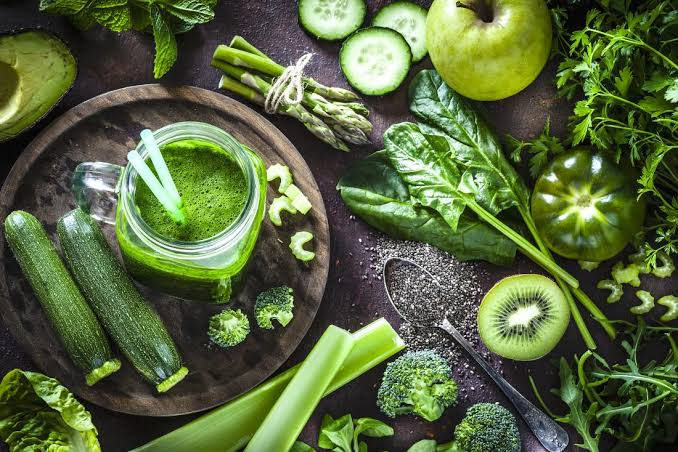Chlorophyll is the pigment that gives plants their green color and plays an important role in the photosynthesis phase. Moreover, this pigment has benefits for human health and the immune system. So what is chlorophyll, which has recently become popular and is often found in social media applications, exactly what does it do? How to consume chlorophyll juice and pigment? What are the benefits to the body and are there side effects? Which plant and it’s found in vegetables? Let’s look at the details together and open the chlorophyll file together…
What’s chlorophyll?
First of all “What does chlorophyll mean?” let’s start by answering this question. Chlorophyll is a special pigment that creates green color in plants. Chlorophyll pigment is found in leaves, vegetables, grass and all plants that perform photosynthesis. This pigment is decomposed from plants such as alfalfa, nettle, grass and spinach with the help of a solvent. Chlorophyll pigment is also a fat-soluble pigment and is preferred for the purpose of giving food different intensities of green hues.
These pigments of different densities are categorized according to their various uses. For example, copper chlorophyll with E141 code is formed as a result of the phase of replacing the caesium ion in chlorophyll with copper ion in order to increase the stability and brightness of the product. Copper chlorophyll covers a much more intensive use area than chlorophyll due to its plus aspects.
What is chlorophyll and what are its benefits
What is chlorophyll water with green color? What is chlorophyll good for? It is time to answer these questions! We would like to draw the gold again that chlorophyll is present in all leafy plants. In the content of some vegetables, such as parsley and green beans, these levels are much higher. Chlorophyll juice, on the other hand, is obtained by squeezing green leaves from vegetables and is very useful for the immune system. Applying chlorophyll to the skin under expert control will help reduce the effects of aging. Other benefits of chlorophyll can include benefits such as preventing bad breath, lowering the risk of developing heart and vascular diseases, boosting the immune system, preventing gingivitis, and reducing bad cholesterol.
What are chlorophyll sources, how are they consumed?
Sources of chlorophyll with green pigment include spinach, kale, roka, green beans, wheatgrass juice, black cabbage, leek, asparagus, peas, and spirulina. So how is it consumed? There are many alternative methods to consume chlorophyll. These may include consuming liquids with a method of squeezing vegetables, consuming vegetables raw directly, or using chlorophyll supplements. As a practical recipe, it will be enough to mix the parsley with water and consume it in this way in order to prepare chlorophyll juice, that is, “s, liquid chlorophyll” drink. Remember that a cup prepared in this way contains about 19 mg of chlorophyll.
Is it safe?
One of the most curious about chlorophyll is whether its consumption is safe! One of the popular ways to consume chlorophyll is to take supplements, and these supplements have different forms in the form of drops and capsules. However, we would like to remind you that the supplements taken at this point should be chosen carefully and must be approved by the Ministry of Health. In the same way, semi-synthetic chlorophyll, marketed as “s of liquid chlorophyll”, also has properties similar to chlorophyll.
Again, research and safe consumption are important in chlorophyll water preference. Even if it is natural, food supplements should be reported to the attending physician. Thus, the potential side effects or interactions with the drugs keep the specialists in check. Finally, let us remind you that research shows that using chlorophyll as a supplement produces no toxic effects and is safe when used in moderation. However, we should note that everything is not like consuming its natural

